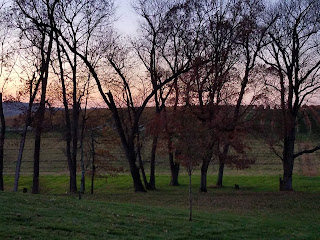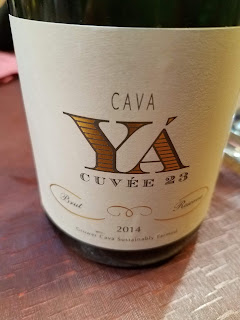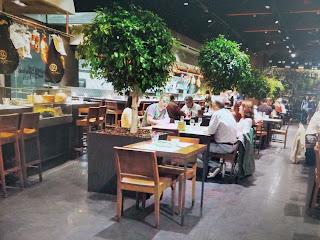Eschewing air travel as many of you are doing during the ongoing pandemic, especially in light the recent surge in cases, day trips will be the order of the day for months to come and I'm delighted to recommend yet another winery in Southeastern Pennsylvania which offers a bucolic escape from the congested city - WAYVINE Winery & Vineyard near Nottingham, just a few miles north of the Mason Dixon line off Route 1.
Managed by the Wilson Brothers, Zachary & James, this relatively new winery features mostly well-known Vitis Vinifera single varietals, such as Chardonnay, Riesling, Sauvignon Blanc, Pinot Grigio, Merlot, Cabernet Franc and Cabernet Sauvignon. What distinguishes their portfolio, however, from other regional wineries is a grape I haven't seen much of in this area, Carmine, which they vinify as both a single varietal and their signature Chief Red Blend, a powerful, tantalizing mélange of this off-the-beaten-track grape, Merlot, and Cabernet Franc.
I had actually heard good things about Wayvine some time ago, through the grapevine, as it were, and so, determined to take advantage of the warm, sunny autumnal weather we've been experiencing of late, I and my wine-loving buddy, Richard, piled into my Prius and we set off down Route 1 on a bright, unseasonably warm recent Sunday all the way past Longwood Gardens, and Kennett Square (and the best winery in Pennsylvania, Va La, in Avondale) to the Nottingham exit to enjoy a leisurely afternoon of wine and song (live music provided courtesy of Amy Faden) on the beautiful, spacious grounds of the Wilson Estate, right next to the rolling vineyards showing off their array of fall colors.
The Tasting Flight du jour featured a dry Riesling, Pinot Grigio, Barbera Rosé, Merlot, the aforementioned Chief Red Blend, and Carmine.
The 2019 Riesling, Richard's favorite of the bunch, started us with on a high note as this was the best Pennsylvania Riesling I have sampled thus far and is a worthy neighbor of the many renowned Finger Lakes issues. Dry, crisp, appetite-whetting, with high acidity, floral and white grapefruit notes this is a well-balanced, harmonious version of the classic German varietal that marks another step in winning me over to a wine that I had shunned for many decades.
The Pinot Grigio was, as expected, a light, easy drinking white with a subdued nose and palate which demonstrated why it has become so popular among less adventurous wine imbibers. I enjoyed the Barbera Rosé as a summer kind of pink with just enough pizzazz, tartness and tannic hints of the red varietal to keep it interesting.
Carmine, a three-way hybrid of Cabernet Sauvignon, Merlot and Carignan developed in California in the 1940s, is a cool climate grape with notable tannins, herbaceous aromas and peppery notes, that seems to have found a welcome home in the challenging terroir of Pennsylvania (as well as New York). The Chief Red Blend brings all these elements together to produce a bold, juicy red that would pair well with a hearty, cold weather stew. It happens to top out at $35 a bottle but worth a splurge if you're inclined to support local business.
Wayvine also offers a variety of mostly local craft brews on the premises, including a few on tap. There is even a short list of hand-crafted cocktails available as well as local cheeses (I especially liked the Seven Sisters from the Farm at Doe Run in Coatesville). You can bring your own snacks or munchies, but they do encourage you to patronize the food truck which on site. You may bring your own chairs if you like, but there are plenty available there and during inclement weather, there is limited outside seating under a large, open tent they have set up. Live music on weekends makes it an especially pleasant way to spend the afternoon.
By the way, the tasting includes a free souvenir wine glass sporting the winery's logo, a nice memento.
So there you have it - another PA winery within an hour's drive or so from Philadelphia very much worth checking out, especially on a sunny fall day. Cheers!
P.S. Here's a link to some more information about local wineries:


















































